
I Am Legend was ahead of its time. Like, way ahead of its time.
Not only did the Will Smith tour de force depict Times Square emptied by a global epidemic more than two decades before the exact same thing happened IRL, but it also managed to predict DC’s plans for a Batman versus Superman live-action movie. Unsurprisingly, the team behind I Am Legend was more confident about the latter.
“We kept saying, ‘This is going to happen. It’s going to happen, guys,’” visual effects producer Mike Chambers tells Inverse. “And eventually, that movie did come out.”
Based on Richard Matheson’s 1954 novel of the same name, I Am Legend remains the definitive retelling (two other movie adaptations exist) thanks to Will Smith’s memorable performance (in interviews at the time, he compared the role to Gladiator and Forrest Gump) and the daring decision to relocate the story from Los Angeles to New York and film largely on location.
“Why not just shoot it on the streets of New York?”
A gargantuan operation therefore began in order to present the city that never sleeps as the city that had gone to sleep. Smith’s character, Dr. Robert Neville, who is immune to the virus that wiped out billions of people, roams around a deserted Times Square and beyond, rifle on shoulder, ready to shoot any of “the infected.” Manhattan had never looked so empty, even if behind the scenes the set was swarmed by everyone from New York’s governor to the city’s police commissioner.
“It was a logistical nightmare but a pleasure to be on,” recalls producer Michael Tadross.
On the movie’s 15th anniversary, Inverse presents an oral history of I Am Legend according to the people who made the film. (Will Smith and director Francis Lawrence declined to participate.)
Welcome to New York
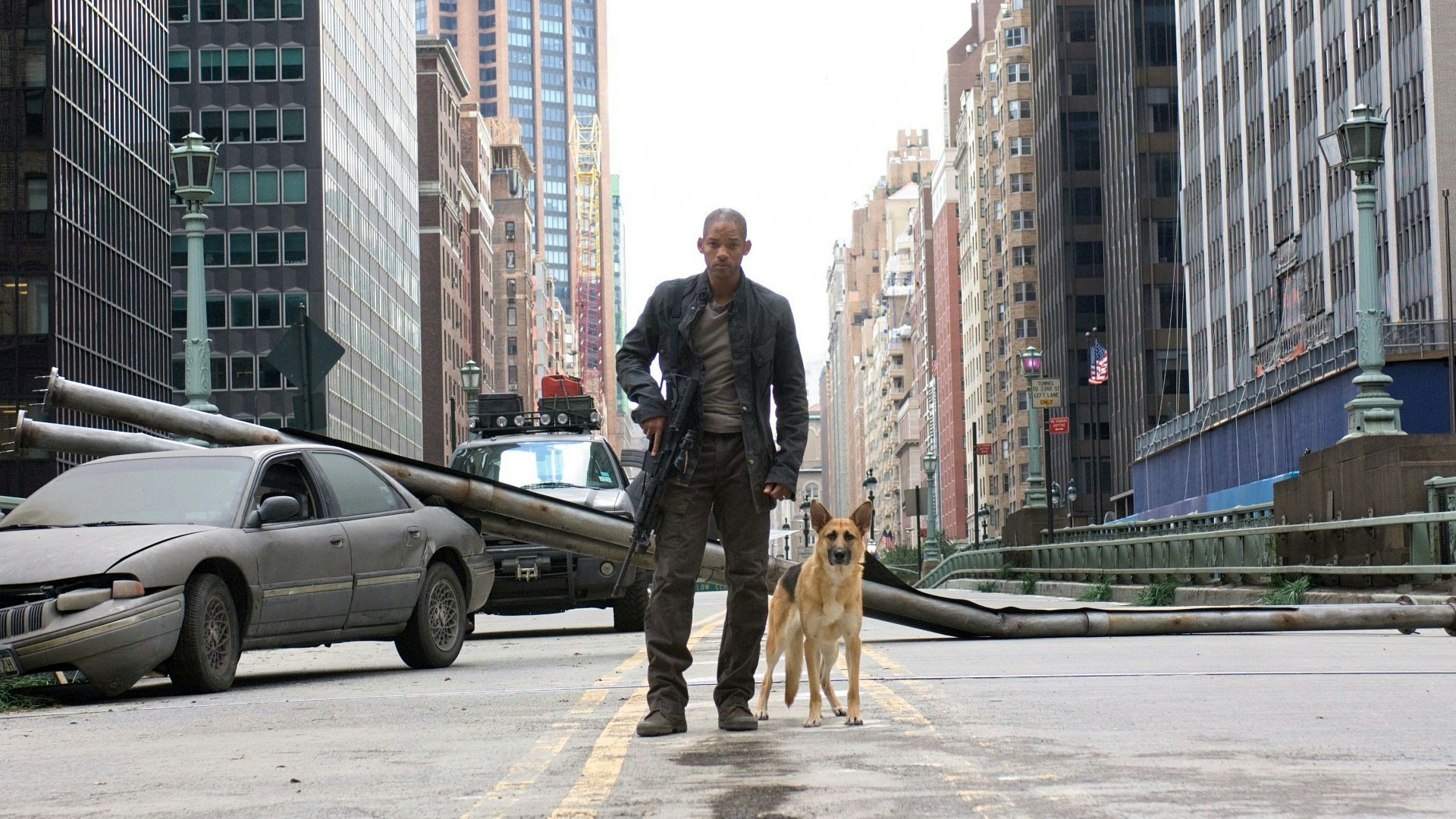
Naomi Shohan (production designer): We had an extremely long prep. We spent about six months in Los Angeles drawing concepts before we even got to New York and then another six months in New York.
Michael Tadross (producer): We took the raw script and broke it down. Nobody could figure out how to shoot it. A year or two earlier, they tried to do a very similar movie and they couldn’t get it off the ground. So I said, “Why not just shoot it on the streets of New York?” They said, “Nobody’s going to allow us to do that.” And I said, “Well, everybody else wants to spend millions and millions on special effects. Let’s shoot as little visual effects as we can and get out on the streets of New York and make a movie.”
Salli Richardson-Whitfield (Zoe Neville): You just knew it was going to be a special movie.
Creating the Creatures
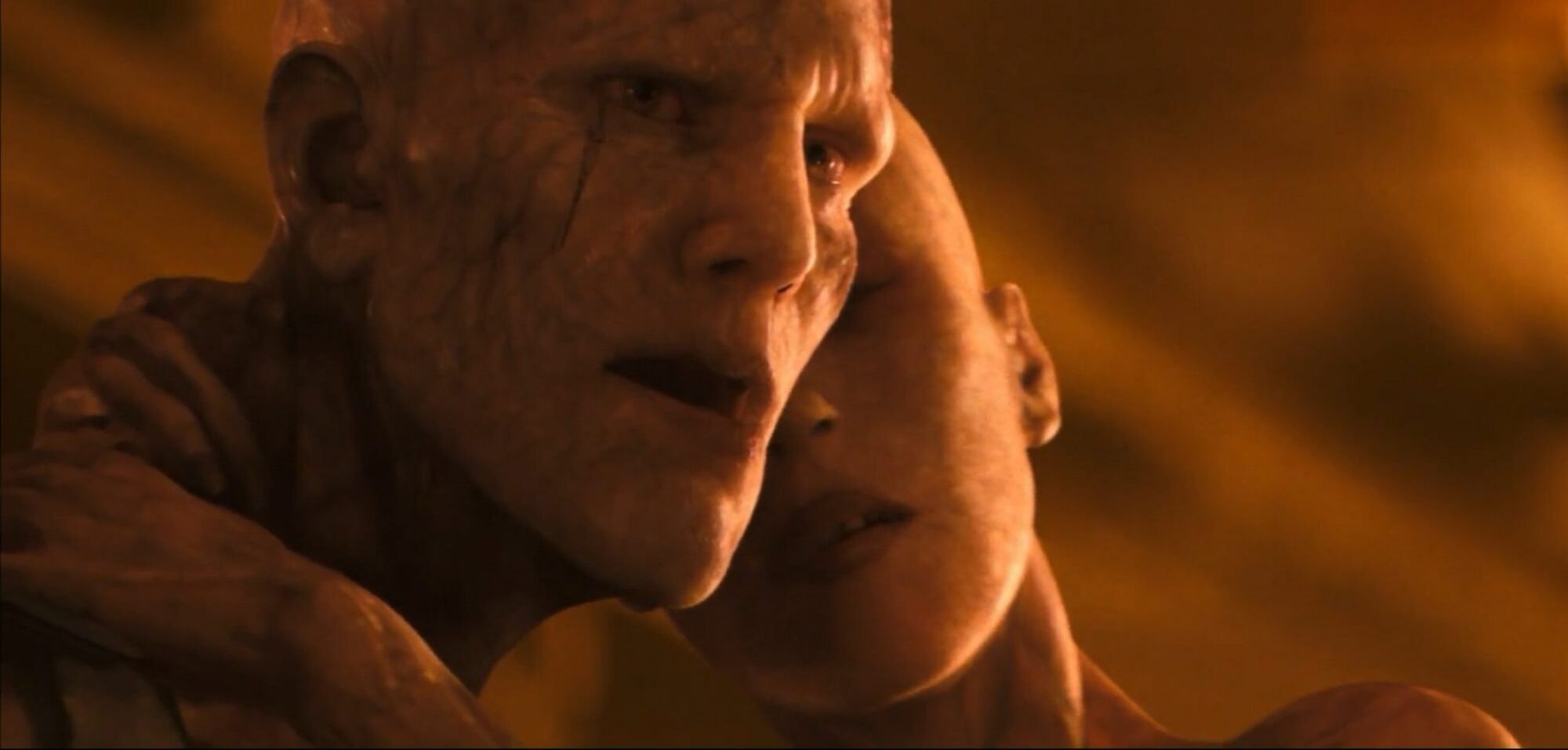
Kathleen Chopin (casting director): From a superficial glance, you would think there are really very few people in the film. You don’t realize how large the cast actually is. There was a very intensive focus and search on finding the creatures, who ended up being called “the infected” in the final script. They were a combination of modern dancers, stunt people, acrobatic people, and parkour people. The brief I was given was that they had to be between 5’10” and 6’1” and under 190 pounds or something.
Naomi Shohan: How to present a creature is always a difficult problem. We were talking about ants and birds and the way that swarms move. It was kind of a hive-mind idea. We did some work with a couple who were dancers who performed naked and really slowly and that was pretty interesting too. I guess they were completely shaved because I can’t remember any body hair of any kind. They just sort of moved in an almost entwined way, close to the ground for the most part. It wasn’t human in the normal way you expect a human being to move. The conversation was “Can we have our creatures be naked? Oh, the studio will never allow it.”
“I guess they were completely shaved.”
Kathleen Chopin: Will and Francis [Lawrence, director] and all the producers came in, and [the creatures] basically did a little performance, which was really kind of fantastic because by the time they were finished, literally the producers were all backed up against the wall, terrified.
Mike Chambers (visual effects producer): We were always saying, “Don’t call ’em zombies” or “Don’t call ’em vampires.” They were not just undead but humans that had been transformed by this horrible disease. Early on, they were a little more primitive, a little more beastly. And as we went farther along, it became important to show that these weren’t just monsters. They had been human beings.
Kathleen Chopin: Looking through my notes, there are pieces of paper like “Creatures day at the hair salon” because one of the requirements, if you were one of the creatures, was to shave your head. Performers on that level, particularly dancers, are very emotionally connected beings. So for most of them, it was quite traumatic to have their heads shaved. I literally sat and held their hands one by one as they were having their heads shaved.
Mike Chambers: I think the first shoot that I attended was the invasion of all creatures, running through Washington Square Park. We obviously had a bunch of performers running through the park; we didn’t know exactly how they were going to look when we were done with them.
Kathleen Chopin: If you’re someone that saw that work, there is a feeling that some of that was lost in them becoming so digitized.
Mike Chambers: It was lost, the grace of some of the dancers.
Creating the post-apocalypse
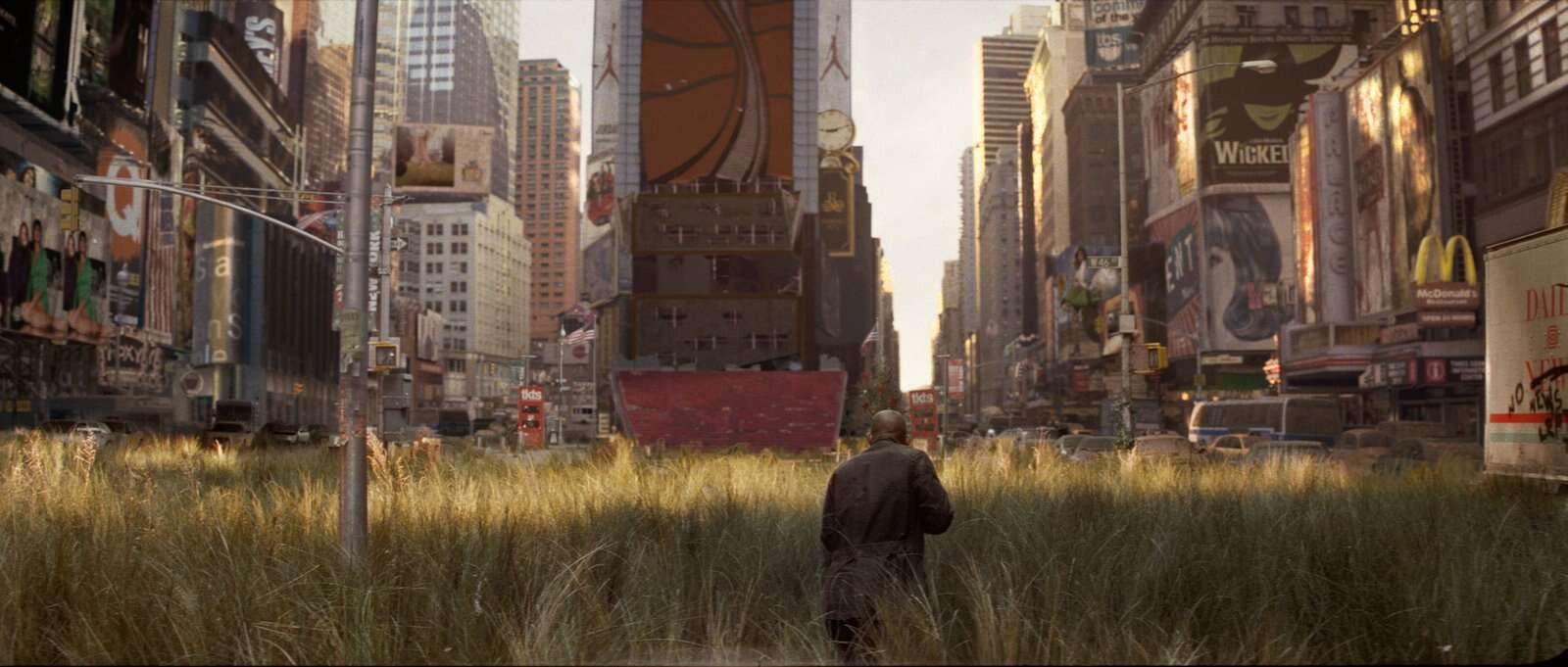
Naomi Shohan: We started to take lots and lots of pictures of the streets from above and start[ed] to subtract cars in every shot. You end up with an image of an empty street, which can never ever exist in real life. I believe we learned how to do the subtraction from 28 Days Later.
Mike Chambers: Through the production period, it was really just being attendant to every location we were at as to what we would need to do to get rid of the city that never sleeps and didn’t while we were there: everything from removing cars and people to building up weeds in the ground.
“It happened that Times Square was being redesigned, and we got our hands on the plans.”
Naomi Shohan: The other important question was how long had this been going on, and what had happened to the city in the meantime? We didn’t understand how quickly plant life actually would take over the city. A book came out shortly after our movie came out, and it said in three years the whole place would be covered in green, which was faster than we expected. I had been pushing for a more overgrown version of the city, and it wasn’t until the illustrators drew a pile-up of cars at the mouth of the Holland Tunnel with an enormous puddle reflecting seagulls flying in the air that the idea of the eeriness of Manhattan finally came through.
Mike Chambers: Parts of the Times Square sequence were shot on a stage. Then we had to put in all the surrounding buildings, the street, stuff like that.
Naomi Shohan: We make the world and they shoot it. We built Times Square, which had a lot of blue screens, obviously. We were in an enormous armory in the Bronx that was 600 feet by 300 feet. Huge. It was big enough to do Times Square. It happened that Times Square was being redesigned, and we got our hands on the plans.
Mike Chambers: Everything was based on the actual environment, the real buildings there. I always liked the fact that in the Times Square scene, there’s a sign on one of the theater marquees that says Batman vs. Superman. We kept saying, “This is going to happen. It’s going to happen, guys.” And eventually, that movie did come out.
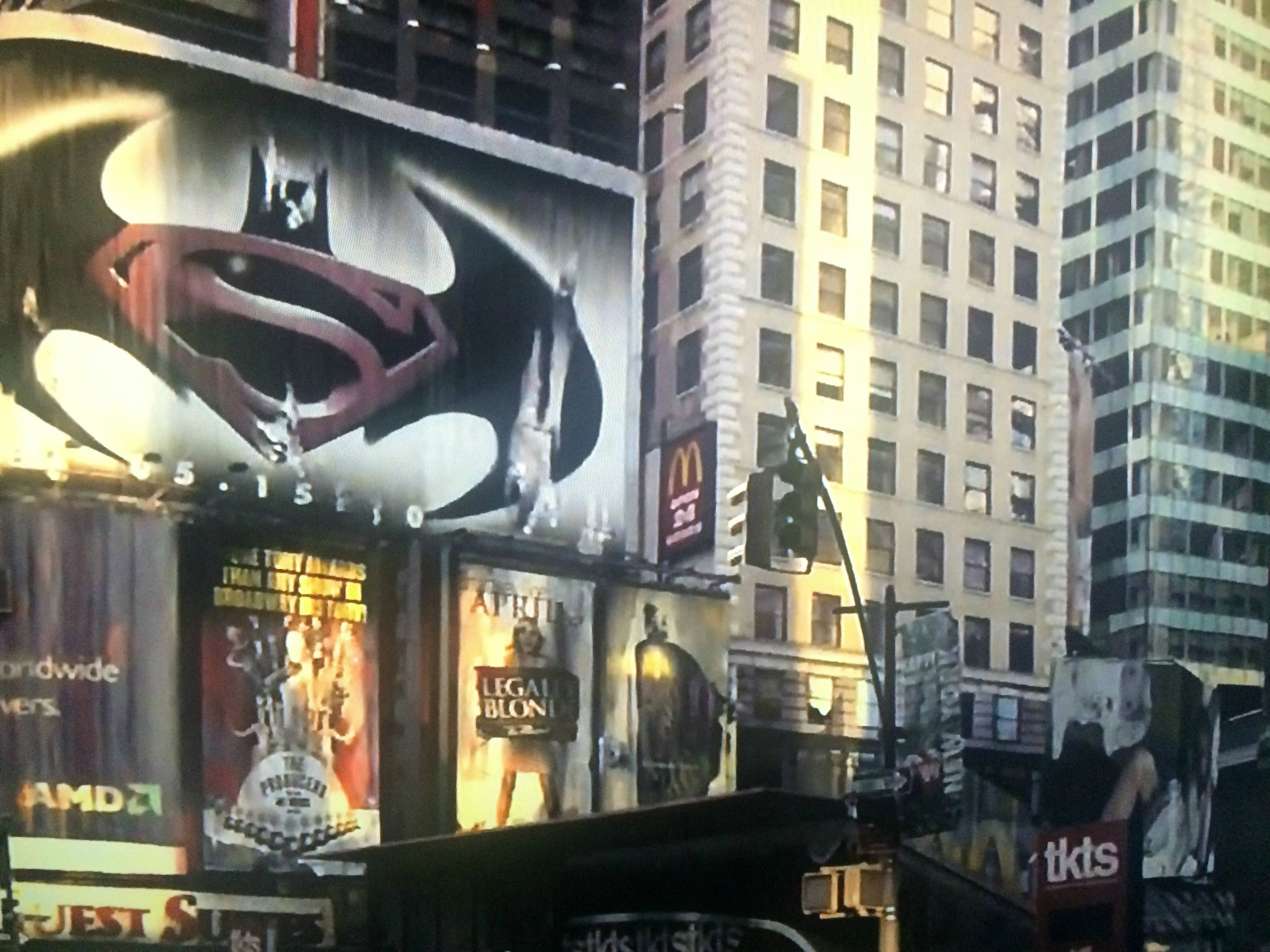
Naomi Shohan: We took a private plane with Will to visit the CDC in Washington. We wanted to see a Level 4 lab. It’s where they’re experimenting with biological horrors. A Level 4 lab is the most secure. We were actually able to see how they sterilize a room. They cover it with some sort of paint so there are never any corners. Everything is round so they can get it completely clean.
The other big discussion was about what this virus was, and how could it be in any way sort of plausible that the virus could so quickly transform human beings into this other version of human beings. It was so interesting to me that we never thought about wearing masks. An airborne infection is really really dangerous, but none of us ever thought about people wearing masks. Isn’t that weird? I’m really ashamed of that, actually. Even Dr. Neville, a scientist, never thinks of putting on a mask.
Shutting down the city
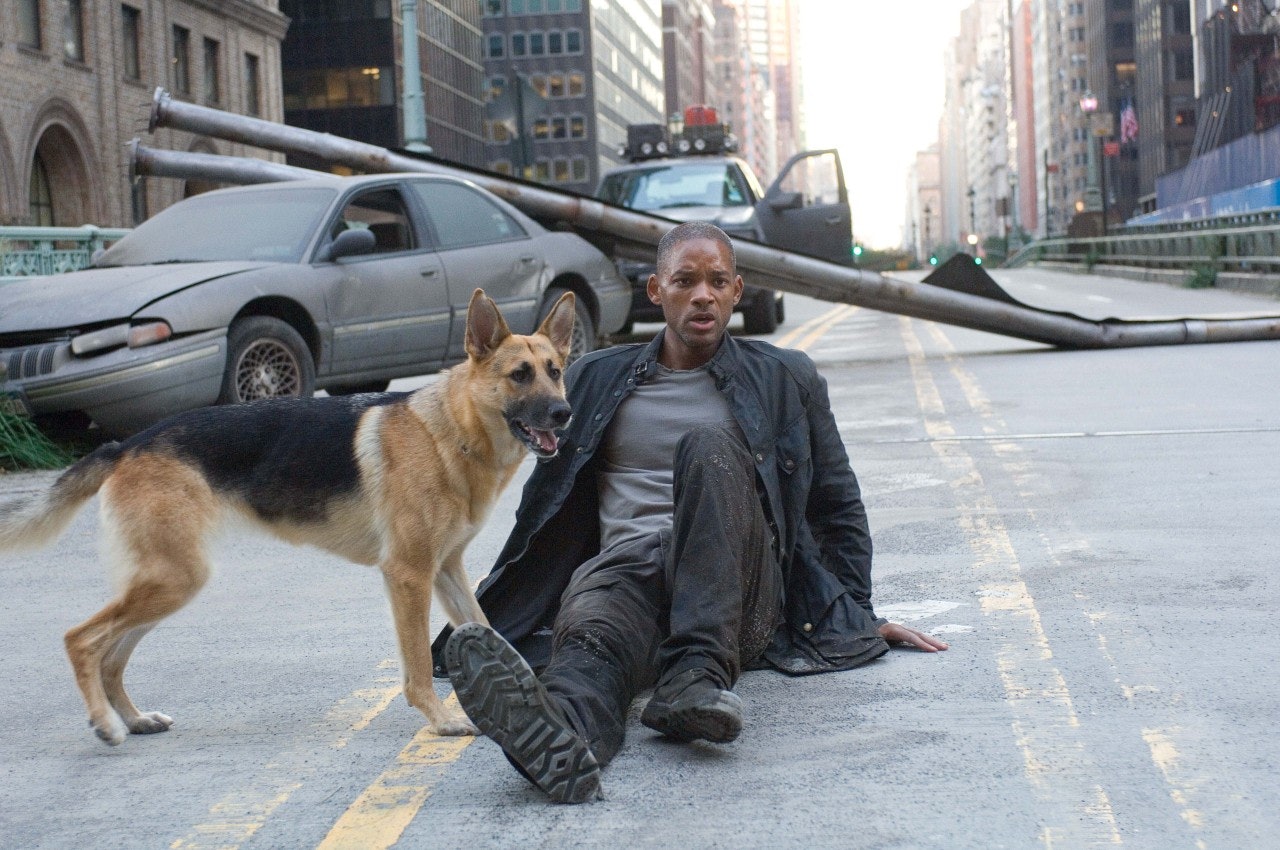
Michael Tadross: We had a huge crew. It was the biggest film in the history of New York to date. Every day, something came up where I had to be there. The governor came one day, people from the city council; the mayor’s office was there almost every day, and the police commissioner came. Will took pictures with all the police. It was a logistical nightmare but a pleasure to be on.
The helicopter on the pier — the big scene with him putting his daughter in the helicopter — was a tough scene to shoot. We had to close part of the FDR Drive. We had fire engines. It was very, very difficult. We were shooting out by the pier, and it was 3 in the morning and the extras were starting to fall asleep and it was freezing cold, and Will got onto the roof of a car and started singing “Miami,” and all 300 extras started dancing.
“People can’t drive that fast anymore when we shut down the streets in New York.”
Salli Richardson-Whitfield: I remember when we shot the big sequence running up to the helicopter. I had obviously done other movies before that, but I remember thinking, “Oh, I thought I was in movies before… now, this is a movie.” I do remember his daughter, who was playing our daughter. Willow was very young. I remember at one point she dropped the dog by accident.
Naomi Shohan: I know that they drove too fast and created a problem. People can’t drive that fast anymore when we shut down the streets in New York.
Mike Chambers: Will had a huge trailer. It was like a double-decker. That trailer probably brought more neighbor complaints than anything else.
Michael Tadross: We cleared from 57th Street to St. Patrick’s Cathedral. That’s quite a few blocks. We had 350 production assistants, police, security. My wife came to visit the set that day, and she said, “This is ridiculous. We’re standing on Fifth Avenue near Rockefeller Center. Will Smith is standing in the street and there’s not one noise. Not one car. Not one horn. Nobody’s speaking.” It was just silence. They respected the movie.
The dog
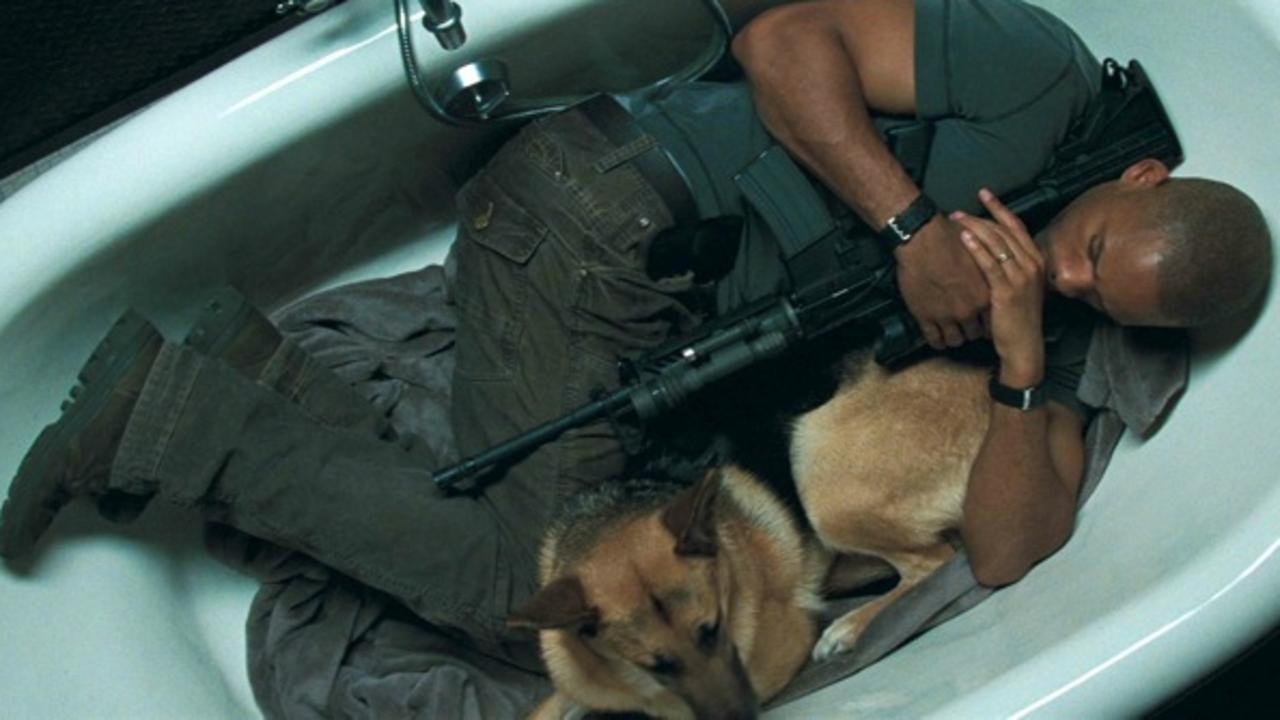
Naomi Shohan: I love the beginning of the movie when he’s just alone with the dog. And I don’t care for the rest.
Steve Berens (dog trainer): I started looking for a female [dog], and I found her in a kennel up towards the California coast. It was an old kennel that was kind of going under, and she was there. She was just under 2 years old and was going to be a breeder. She had the right look. As it started, I went to Will’s place, and she started barking at him. I was like, “My gosh, settle down, you’re going to get me fired before we get going here.” Will was fabulous. He viewed the dog as his co-star, which is smart. I was very happy with the end result. I believe that she looked like his dog. She passed away three years ago. She was a fabulous dog.
Naomi Shohan: I met the dog. Lovely. Very nice.
Steve Berens: I actually worked with a treadmill that was in the hotel. I just started very slowly and would have the other trainer as a kind of safety. I took it to a complete sprint. As we got closer, I had this treadmill with a dial, and I could control it completely. Francis just wanted the dog trotting, and I was like, “Are you sure? Don’t you want her to start sprinting when he starts sprinting on the treadmill?” I just made this face, and Will looks over and he says, “You got her sprinting good, don’tcha?” I said, “Hell yeah, man, I’ve been working on that like crazy. I want to do it.” I don’t think we ever did.
Michael Tadross: Having a dog run on a treadmill is pretty cool.
Steve Berens: We shot a couple of different endings, and you didn’t know where it was going to go, but I thought the more powerful one was when he had to [murder] his own dog. I had the dog just roll down his arm and just get to the ground. She really learned the concept of letting it all go so much so that at first because Will hadn’t rehearsed it, he was kind of catching her and was afraid she would hit too hard or whatever. She rolled down the arm but when her head just touched the ground, it was just a little bit of a bounce, and I was so happy with that shot. She had to learn that concept of releasing everything in the body as if you’ve fainted. I was about 6 feet away, just down low, probably on my hands and knees.
Multiple endings
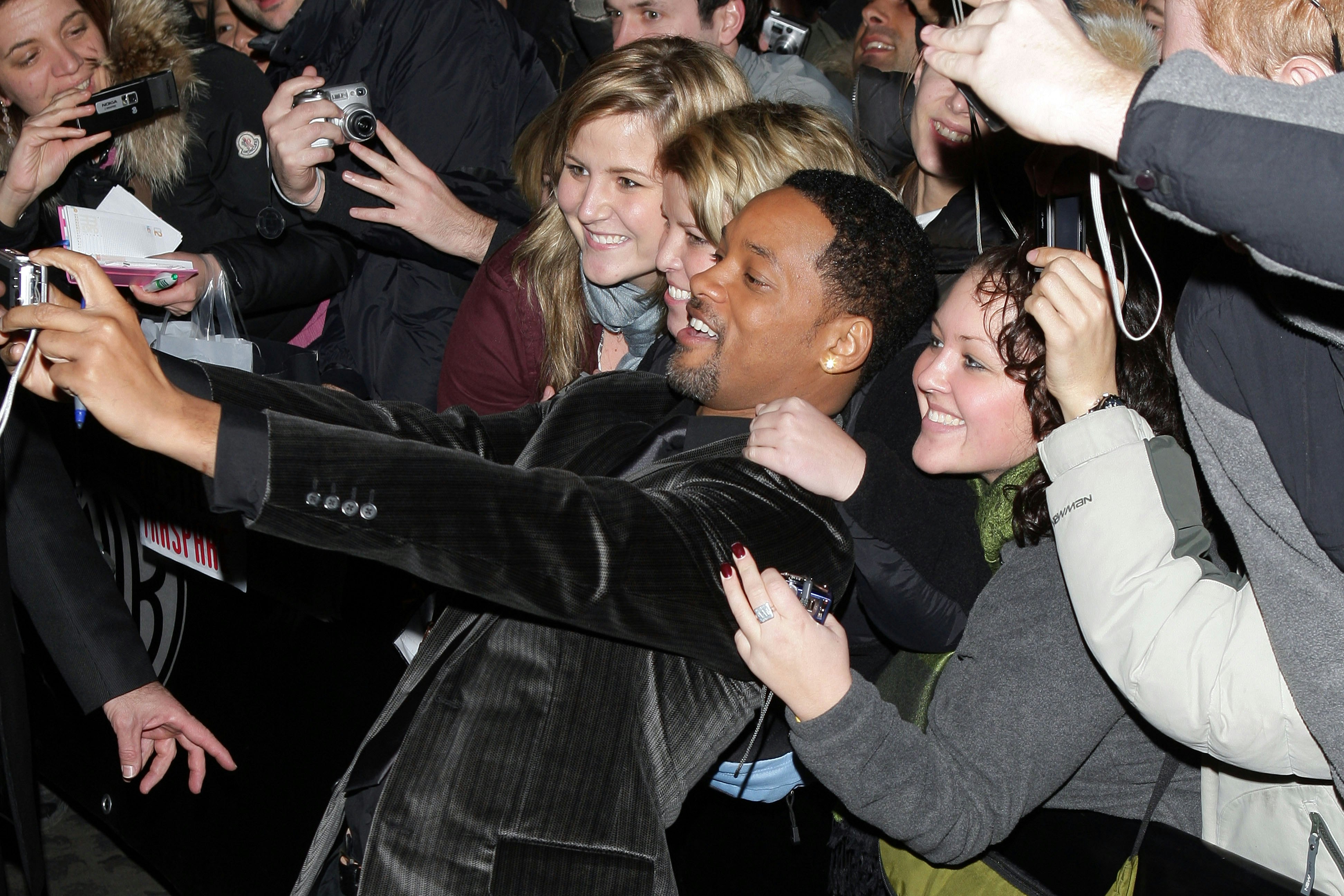
Mike Chambers: We completed both endings, visual effects-wise. When we delivered, I don’t think they’d decided which one they were going to go with.
Michael Tadross: We just wanted to make sure, if we had to do a sequel, we could do it. You don’t know if he blew up or not because he was behind a brick wall.
Naomi Shohan: In the book, the end of the story is not hopeful for human beings as we know them at present. It’s hopeful for the new kind. It’s their turn. They’ve all turned into something else, and there’s no way that you can have a human life anymore.
“The city of New York opened their hearts to us.”
Salli Richardson-Whitfield: I went to the New York premiere, which was exciting. I remember Tom Cruise there. It was a huge premiere. They’ll be great memories to have forever.
Michael Tadross: At different screenings, I would sneak into, there were people having standing ovations in the theater. People loved that movie. The city of New York opened their hearts to us. They’ve never done it before, and I’m not sure they’ll ever do it again.







